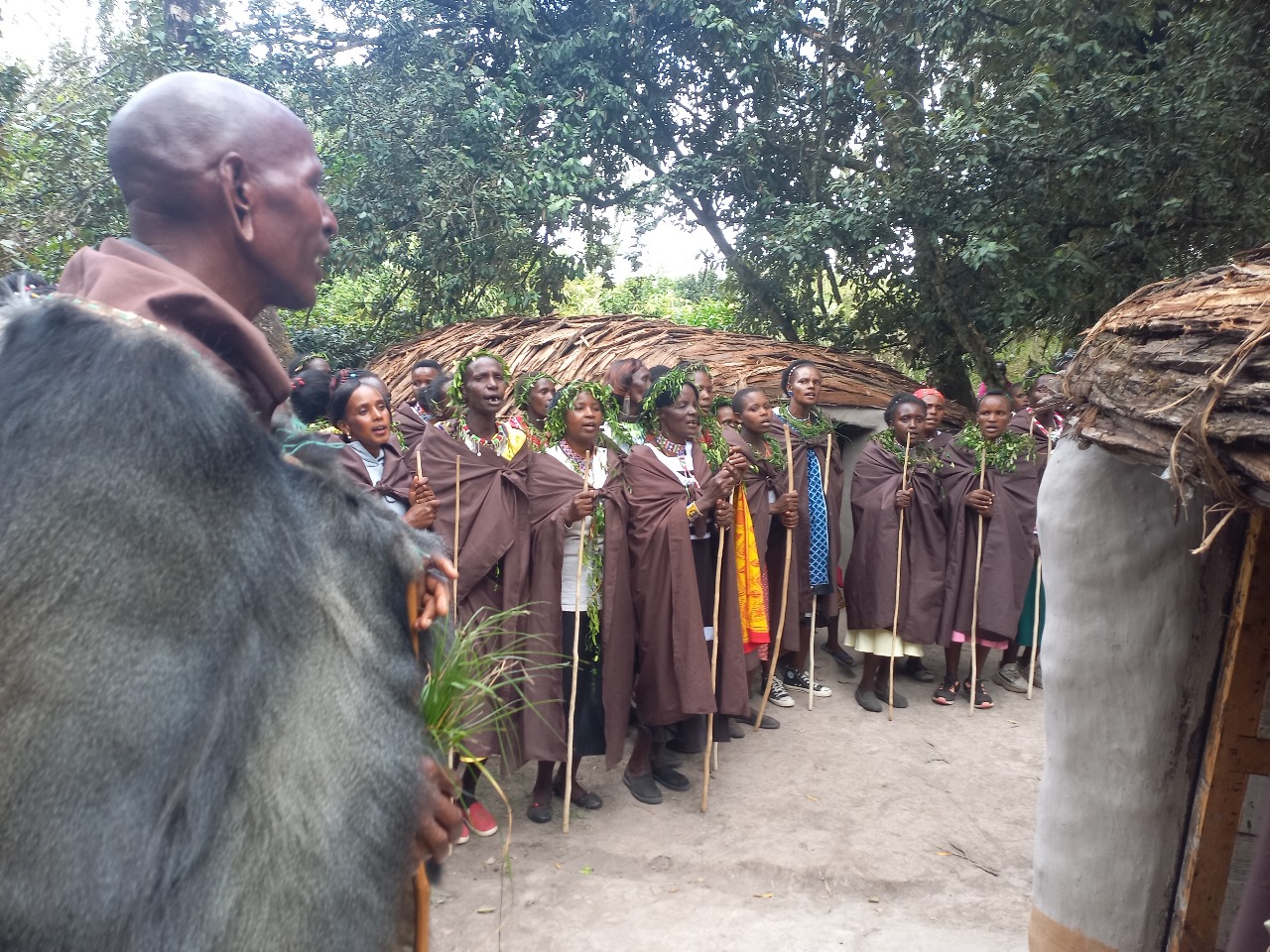
I watched Mzee Salaton Lenadung’uenkop don his elder’s regalia known as Sampuut - consisting of a furry cap and furry hood made of animal skin draped over his shoulders. As an Elder, this is his look when performing any service that calls for seriousness that involves the preservation and protection of his People’s ways. He wears this suit with pride and a nostalgic smile to cap it all.
All along, he has not stopped giving me anecdotes here and there on his people’s history, dating back ages with my own people, the Maasai, as they live side by side. Matter of fact, he reminds me that the Maa language, among other larger Kenyan languages where the Ogiek community is spread, is one of the key assimilators of the Ogiek culture and language. However, all is not lost, as he goes on to show me practically while explaining what he and other elders in the community are doing to revitalize everything Ogiek to the daily lives of their people.
He looks up at the trees as we walk towards the Ogiek Cultural Village, as he explains to me in detail the different noises emanating from them. From the variety of bird species, the little monkeys and bushbabies alike all sounded like a cacophony of heavenly melodies that were all making up a single orchestra of nature.
Every single animal or bird in the Mau Forest ecosystem has a role to play in the life of the Ogiek. Every tree, every plant has a meaning. None is more important than the other. Be it a plant, a root, a leaf, a stream or a bee – they are all fundamental parts of their everyday life and their growth and existence are intertwined with theirs.
Sadly, our conversation is purely in the Maasai language – my own language. This is mainly because Mzee Salaton and other Ogiek community members have been forced to assimilate into the Maasai culture on this side of the Mau Forest belt. This is the same trend on the other side of the forest where the Kalenjin, another bigger community, live side by side with them. The Ogiek language is one of the endangered languages in Kenya, with two of its three dialects being extinct already.
Through people like Mzee Salaton, the Ogiek People’s Development Program has initiated strategies and systems to revitalize and pass their language down to the younger generations of their people. As a learning camp over the school holidays for Ogiek youth, the Ogiek Cultural Center hosts learners from the community, where they are taken through basic language training and other cultural classes that are essential for everyday life.

Other initiatives that the Center is carrying out towards revitalization are a music studio where musicians of Ogiek descent can record music in their language for free, a library to document the literature of their people, and an artifact repository to act as a museum for cultural artifacts that are getting lost. They are also in the process of setting up a resource library online for all things Ogiek, as well as initiation of the process of developing an Ogiek Language Dictionary. The dictionary project, according to the center manager, Mr. Samson Luari, is a tedious endeavor that requires resources and a large pool of community effort. It is, however, a task that they are willing to undertake fully for the benefit of future generations of Ogiek people.
Subsequent governments of the Kenyan State have over the years used policy to harass and intimidate the Ogiek people who predominantly reside in forested areas, pushing them out of their ancestral homelands. Years and years of court proceedings, including a historic win in the African Court of Justice at Arusha in 2017, saw the African Court compel the Kenyan government to pay the Ogiek reparations both in monetary form and the delivery of a collective title for land to settle the community members for atrocities meted on them over the years.
You can read both sadness and hope in Mzee Salaton’s eyes as he narrates to me the impact the Center has already had in bringing back all that has been lost by the community through cultural assimilation owing to their small numbers. He has lived through years of forced evictions, targeted marginalization and minimal representation in any level of administration. He knows what his people have gone through and the circumstances that this peril has caused his people. However, he believes that there is hope on the horizon through initiatives like the Ogiek Cultural Center and other community-based solutions that are seeking to restore their almost lost ways and to revitalize their language that is threatened by extinction.
All is not lost.
Learn more about the Ogiek Cultural Center and Ogiek Peoples' Development Program at http://ogiekpeoples.org.